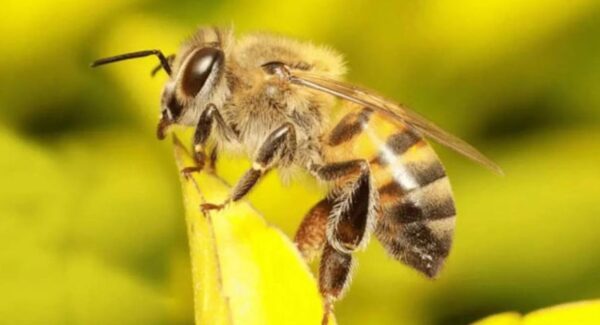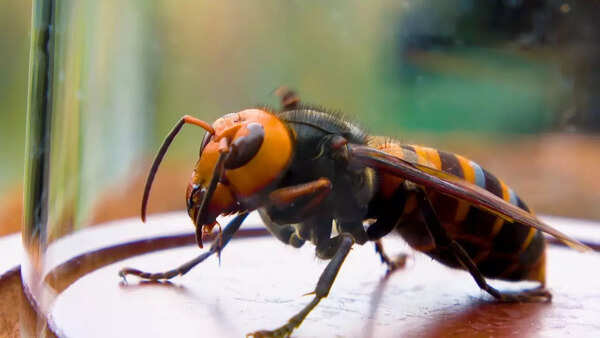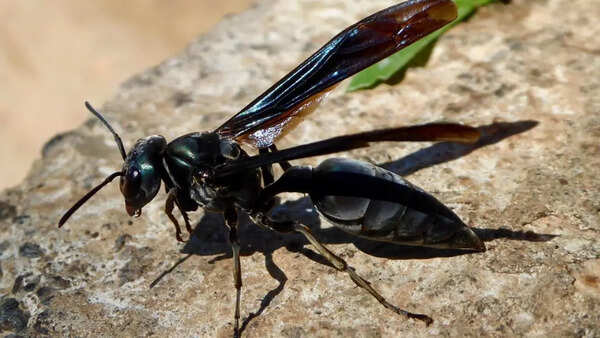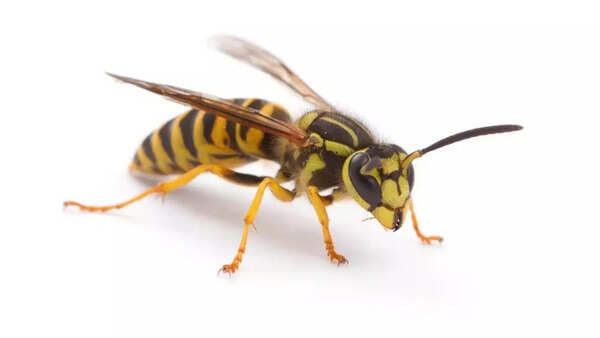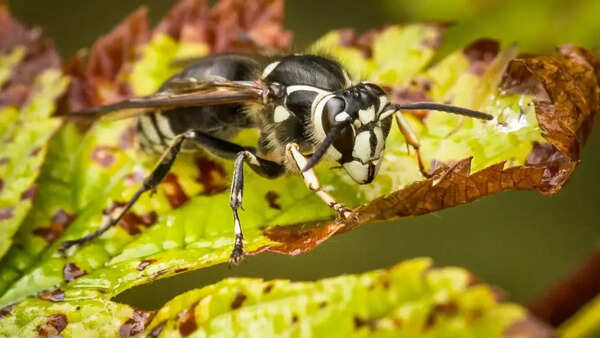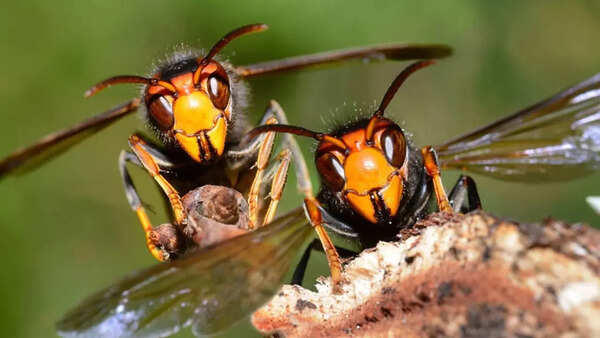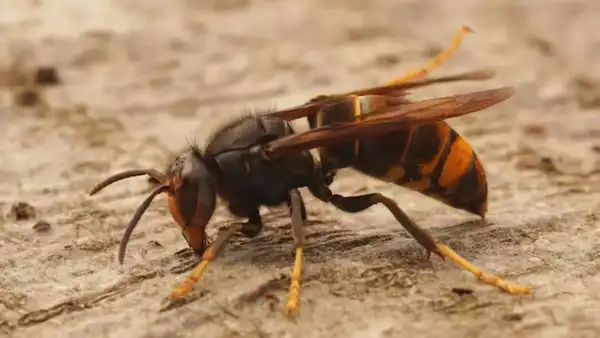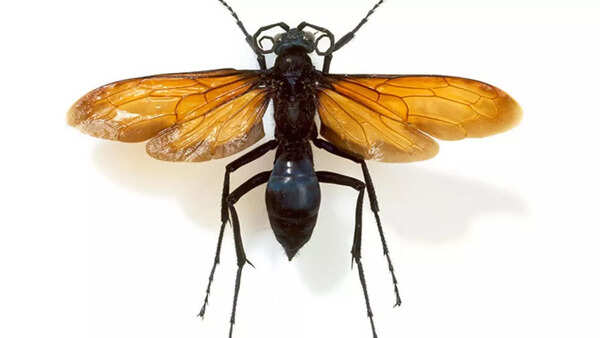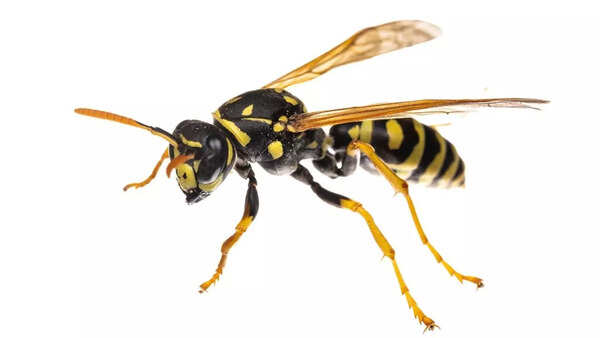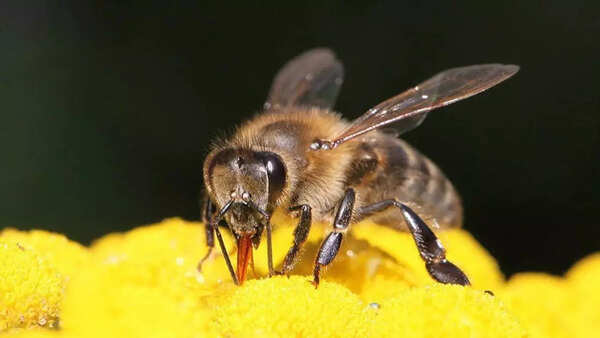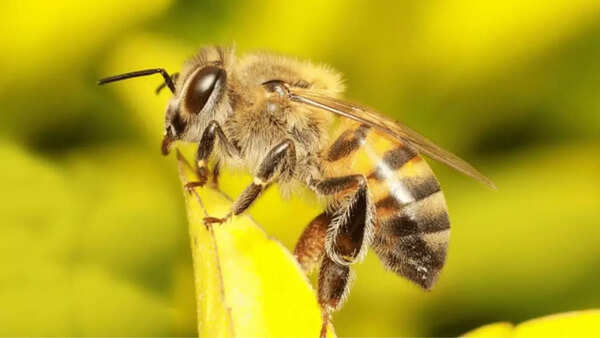Bees play a vital role in pollination and ecosystems, but not all are the gentle garden visitors we imagine.
Some bees—and wasp-like relatives—pack a powerful sting, show
extreme aggression, or defend their nests with deadly force.
Whether it’s their painful venom, swarming behavior, or territorial nature, these species are not to be taken lightly.
From tropical rainforests to suburban backyards, they command respect.
In this list, we explore the world’s top 10 deadliest bee and bee-like species you should never provoke, complete with their nicknames, regions, threat levels, and evolutionary origins.
Below are the
dangerous bees found across the world:
1. Africanised Honey Bee – “The Killer Bee”
One of the most dangerous stinging insects in the world, the Africanised honey bee is found across South and Central America and parts of the southern U.S. These bees are extremely aggressive and easily provoked. Swarming attacks have led to hundreds of fatalities since their accidental release in Brazil in the 1950s. In one tragic 2013 incident in Texas, a man was killed by more than 40,000 bees when disturbed a nest near his home. Victims often can’t outrun them; these bees can chase perceived threats for over 400 meters. Though each sting isn’t more toxic than a regular honey bee, the sheer number of stings causes anaphylactic shock or death.
2. Asian Giant Hornet – “Murder Hornet”
Native to East Asia and now a rising concern in North America, the Asian giant hornet is the largest hornet in the world, with a sting that delivers powerful neurotoxic venom. It has been responsible for dozens of deaths annually in Japan, mostly due to multiple stings or allergic reactions. Their venom can dissolve tissue, and they tend to attack in groups, particularly when their nests are disturbed. In 2020, the hornet made headlines after being spotted in Washington State, sparking a multi-agency eradication effort due to fears of both human harm and the devastation of local bee populations.
3. Warrior Wasp
Found in Central and South America, the warrior wasp delivers one of the most excruciating stings known—reportedly on par with bullet ants. Pain can last hours and may result in nausea, temporary paralysis, and dizziness. Highly territorial, these wasps “drum” their bodies in unison to warn off intruders—often a prelude to an attack. Entomologist Dr. Justin Schmidt, creator of the “pain index” for insect stings, ranked it near the top for intensity and danger.
4. Yellow Jacket
One of the most aggressive wasp species worldwide, yellow jackets can sting repeatedly without dying, making them especially dangerous. Common in North America and Europe, they are responsible for the majority of wasp-related allergic deaths in the U.S. Every year, hundreds are hospitalized due to multiple stings or anaphylaxis. In 2018, a swarm in Ohio attacked a group of children, sending five to the hospital. Yellow jackets are particularly hostile in late summer and often nest near humans—in attics, walls, or underground.
5. Bald-Faced Hornet
Though not a true hornet, the bald-faced hornet is a fiercely territorial wasp common in North America. It attacks in groups, delivering repeated stings laced with venom that causes severe swelling and intense pain. In 2015, a swarm attacked hikers in Ontario, leading to multiple emergency rescues due to hypersensitive reactions. Their large, football-sized nests are often built in trees or eaves, increasing chances of accidental human contact.
6. European Hornet
Originally from Europe and now invasive in North America, the European hornet is a large, aggressive stinger. It defends its nest with force and can sting multiple times, injecting a venom that causes tissue inflammation, dizziness, and severe pain. In Virginia, several children were hospitalized in 2021 after accidentally disturbing a hidden nest during a picnic. Their tendency to build nests in human structures (walls, sheds) makes encounters increasingly common.
7. Vespa velutina – “Asian Hornet”
This invasive hornet species is spreading fast across Europe and poses a double threat: painful stings and devastation to honeybee colonies. In France and Spain, emergency rooms report hundreds of sting-related cases each year, including severe allergic reactions. Vespa velutina can sting repeatedly and react aggressively to human activity. Its rapid expansion has prompted EU-led extermination programs to protect both people and pollinators.
8. Tarantula Hawk Wasp
Despite being less aggressive to humans, the tarantula hawk wasp delivers a sting so painful that victims have been known to scream involuntarily and collapse. Its sting ranks among the most painful of any insect. Found across the southwestern U.S. and Central America, it rarely stings humans unless provoked—but when it does, the pain is instant, electrifying, and incapacitating, though not usually medically dangerous.
9. Paper Wasp
These globally distributed wasps build umbrella-shaped nests and will defend them with painful stings. Though not as aggressive as yellow jackets, paper wasps can sting multiple times, and allergic reactions are not uncommon. In 2016, a paper wasp nest on a patio in Florida led to a family of four being stung and hospitalized, with one person needing antivenom treatment.
10. Japanese Honeybee
While harmless to humans in most situations, the Japanese honeybee earns a spot on this list for its astonishing hive defense mechanism. When attacked by an Asian giant hornet, these bees form a “bee ball”, vibrating in unison to create heat and cook the hornet alive—a rarecase of mammals killed by thermal attack instead of venom. Although they pose no real threat to humans, their lethal precision against invaders earns them a unique mention.
Final words of caution
Most of these insects do not seek confrontation—but disturbing their nests or moving too close can trigger violent swarming behavior. Victims of multiple stings may experience toxic venom buildup, anaphylaxis, or organ damage. Stay aware of your surroundings, especially in wooded areas or during outdoor work. If you spot a nest, do not attempt to remove it yourself—call professional pest control services. Whether you’re hiking, gardening, or just enjoying the outdoors, a simple rule could save your life: respect the hive, and back away slowly.
